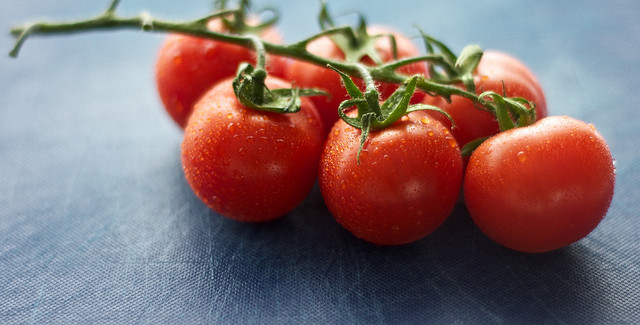
Should I Store Tomatoes in the Fridge?
Recently, we interviewed Dr. Floyd Woods and Dr. Joe Kemble, both from Auburn University, about fruits and vegetables. These experts offer some excellent advice about storage and shelf life, in addition to their expertise about washing fruits and vegetables.
The fridge is too cold for some fruits and vegetables. Don’t store tomatoes in the fridge. It’s too cold in there! Most refrigerators are set around 35°F to 45°F which is too cold to store tomatoes and many other vegetables such as summer squash, bell peppers and eggplants.
Watch for chilling injury. Most fruits (oranges, lemons, etc.) and vegetables (tomatoes, peppers, eggplants, cucumbers, watermelons, etc.) of tropical and subtropical origin may be damaged by cool temperatures and develop a condition called chilling injury. Chilling injury results from prolonged exposure to low but not freezing temperatures. Symptoms of chilling injury include dark circular pits on the surface, shriveling, internal darkening, loss of the ability to ripen and the development of off-flavor and poor texture.
Each fruit and vegetable has its own shelf-life. Depending on the fruit or vegetable, the shelf life can differ from a few days after it is harvested to one or two weeks (months for many winter squashes, Irish potatoes, pears, apples and root crops) depending on how the produce is treated after it is harvested. If this is produce that you purchased from a supermarket or farmers market, you might not be able to do much to extend its shelf-life unless you know when it was picked and how it has been stored.
Proper berry storage will help achieve a maximum post-harvest life. In the case of strawberries, blueberries and other berries, generally any wetting or direct contact with water is detrimental and will shorten their shelf-life. You should never place any of these into your sink to soak them. Before you store them, be sure that they are clean but do not wash them until you are ready to use them. Strawberries, blackberries, blueberries, and raspberries are natives of temperate climate and can be stored in your refrigerator. In fact, they should be stored as close to 32°F as possible to maintain their shelf-life. When stored properly, strawberries have a shelf-life of a week, blueberries can last up to two weeks, and blackberries and raspberries will last two to four days.
If you cool the produce from your garden correctly, then you will extend its shelf-life. As an example, if you are going to cool and sanitize your tomatoes you will need to do more than simply run the fruit under cold tap water. In fact, that is the worst thing you can do. You will need to dip or soak your tomatoes in water that is the temperature of the tomatoes that you just picked. So if it is 85°F outside, the internal temperature of your fruit will be about 85°F. When preparing your cleaning solution, the water must be at the same temperature as the tomato. We realize that this seems odd, but if the water is cooler than the fruit the drastic change in temperature will cause the tomato to actually draw in or suck in through its pores water that surrounds it. It is a great way to get microorganisms into your tomatoes that will ultimately cause a fruit rot. After you clean and sanitize your tomatoes, place them in a cool area somewhere around 55°F.
“Fresh Tomatoes” by Jens Cramer is licensed under CC BY-NC-ND.

























